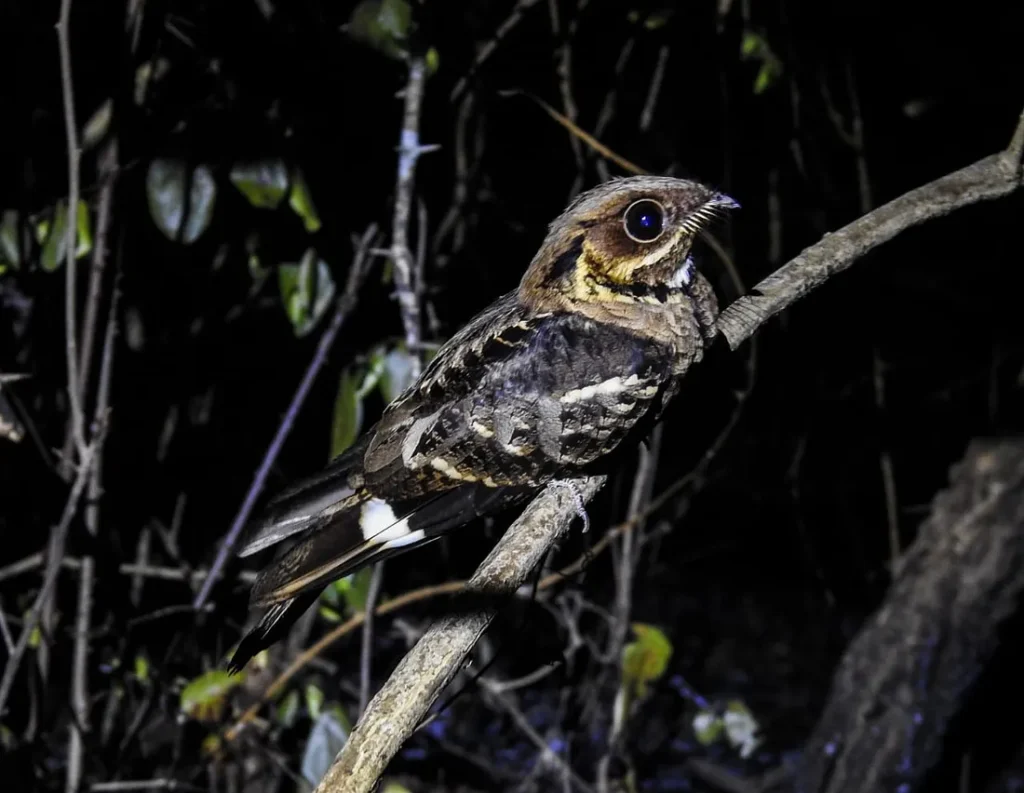Bogey Birding In Goa
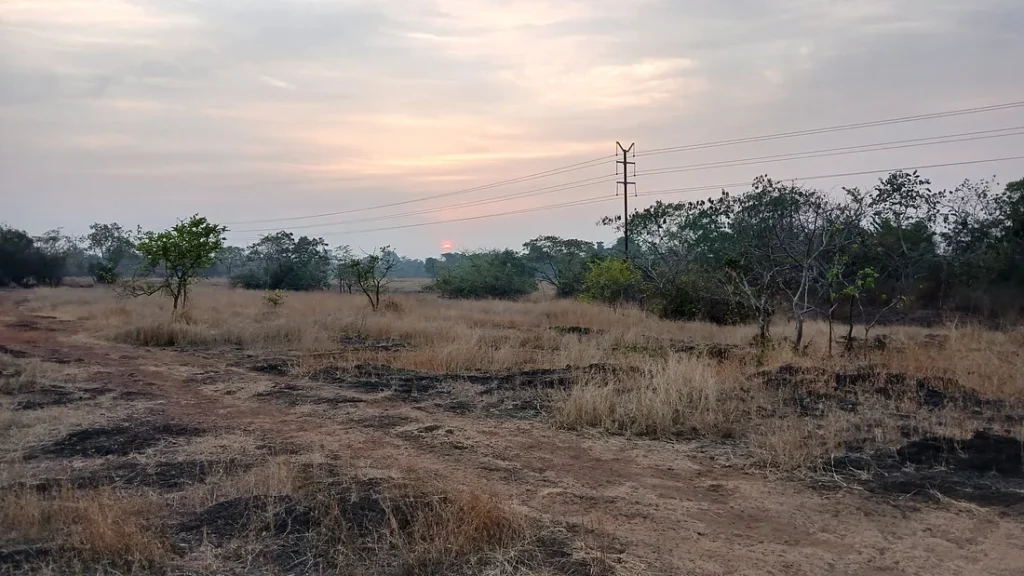
‘There. That’s them calling. Keep an eye out, they usually come in from the east.’
Stephen surveyed the horizon with his bins. The land was open; dry, knee-high grass dotted with a few thorny shrubs and the odd patch of trees. Beyond the savanna, a wall of thick jungle encircled us.
The sun was just setting on the plateau, long shadows turned the laterite that jutted out of the sandy earth from red to black. A silhouette flapped lazily across the pink sky. Then another ghostly shape. And another.
The darker the sky got, the more birds flew in. Soon they were flying directly over our heads. Savanna nightjars, hawking insects on the wing in the still evening air. Eerily quiet except the occasional clap from a close flyover.
Spectacular, but not the nightjars we were looking for.
‘The Jerdon’s will be in the trees, probably over there.’ Stephen indicated behind us. ‘Ah.’ He smiled. ‘There’s one calling, now.’
Back in Goa again
It was late January. The weather was still cool, the beach shacks were buzzing and the birds were good.
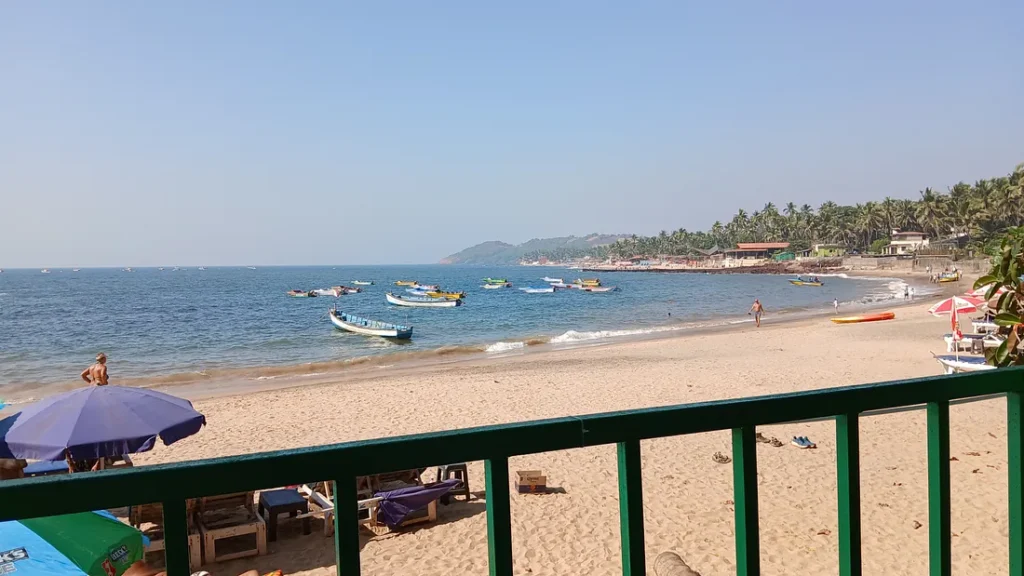
There was a lot to fit in before I headed south to Karnataka for a wedding, mostly visiting various haunts and hangouts, old favourites like Happy Hours on Anjuna beach or Mango Tree in Vagator.
But high on the list was catching up with Stephen again and taking a chance at two species that had eluded me for what felt like forever.
The biggest target, since it’s a local speciality, was grey-headed bulbul. This Malabar endemic, a smart bird for a bulbul, is famously tricky, even in Goa, one of its strongholds.
The second species has mocked me all the way across India to Southeast Asia. I’d missed it in Sri Lanka, Thailand and Vietnam, even when the Merlin app helpfully pointed out it was commonly seen. And what a bird it is too, the enigmatic yellow-eyed babbler.
Stephen and I both had busy schedules, not helped by the fact that I was trying to juggle seeing an eclectic mix of old friends and ex-colleagues, many of whom liked late-night trance parties. Early mornings were a struggle.
Despite me making it as difficult as possible, we managed to agree on a morning in the forests of Marna for the bulbul and an evening at the Socorro plateau for the babbler.
At least, we’d try for the elusive babbler. I’d still be on for a life with the Jerdon’s nightjar if we were out of luck.
Marna
Early morning mist from the Anjuna river still hung over the paddies east of Siolim. Taking a side road, we passed the tiled roofs and ornate porches of old Goan houses nestled in the forest. A pair of dogs rushed out to chase us a short way up the winding hill to a small shrine where we left the bikes.
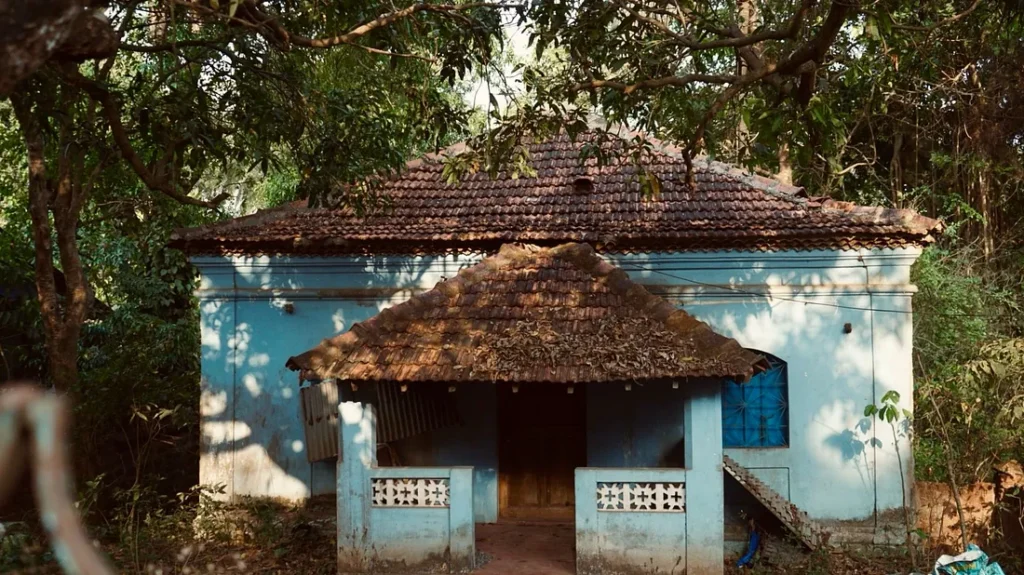
Some of the trees had been cut back, exposing terraces of laterite stone blocks. The thinned woodland was a mix of figs and mangos, coconuts and fishtail palms. The air was full of the songs of orioles and drongos. This mixture of jungle and cultivated fruit trees makes coastal Goa such a productive and enjoyable place for birding.
Small flocks of chestnut-bellied starling swept in and out of the tree tops. An orange-breasted green pigeon gave its distinctive call. Everywhere, bright yellow orioles, Indian and black-hooded, chased streaked females through the trees.
A black-rumped flameback flew in and crept up a trunk, soon to be joined by another giving a loud, ascending rattle. Several flamebacks along with a single rufous woodpecker, a dark brown, unusual bird, were hanging around the canopy of the tallest trees here all morning.
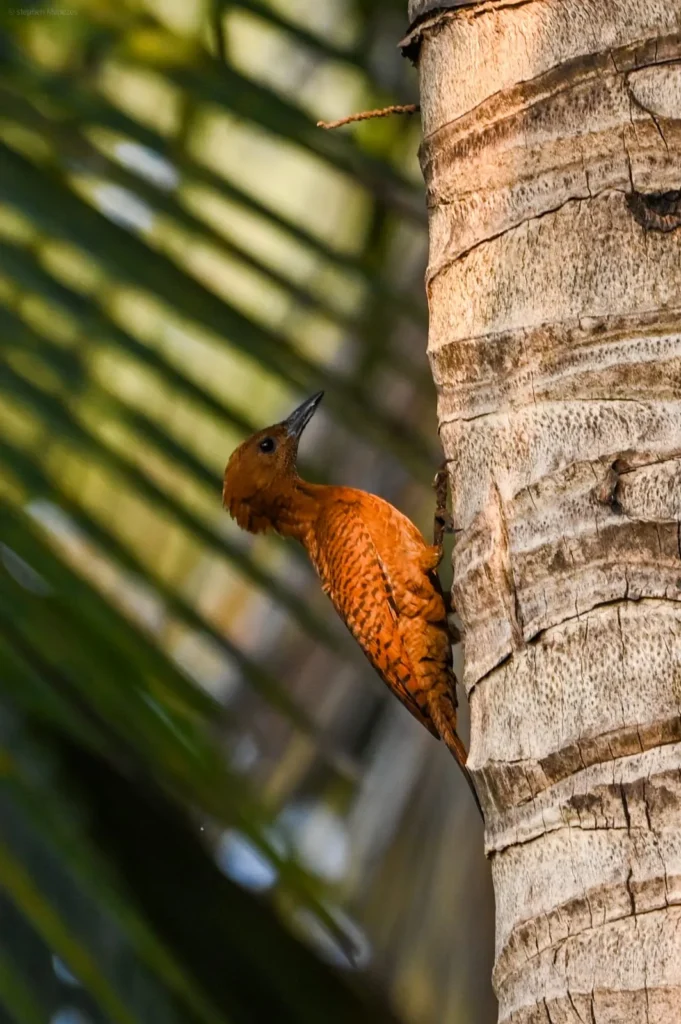
Grey-breasted prinias buzzed through low scrub, young ones, foraging together in a family unit. An iridescent male purple sunbird scratched a high pitched warble from a palm frond, the sun glistening its bluish cap, while the female picked nesting material from the floor.
A greater racket-tailed drongo with enormous streamers dove onto a large insect on the ground. After a while it flew up to a branch and called mischievously, imitating a crested serpent eagle. White-cheeked barbets fed on figs in the crowns of fruiting trees, occasionally giving their echoing calls that, for me, epitomise birding in Goa.
In the excitement, I’d stopped listening out for the target bird. It wasn’t the first time Stephen had impressed me with some secret little patch of forest completely alive with birds and left me spoilt for choice, not knowing where to look.
Luckily, Stephen hadn’t forgotten the reason he’d brought me here, and was quickly drawing my attention to a mango tree covered in thick creepers and ivy-like foliage.
We spent some time isolating the sharp, peeping calls and peering into the tangle. Suddenly, a green-grey bird with striking pale eyes flew right out of the thicket and perched in the open. Soon, more joined it, often perching at low levels and giving excellent views.
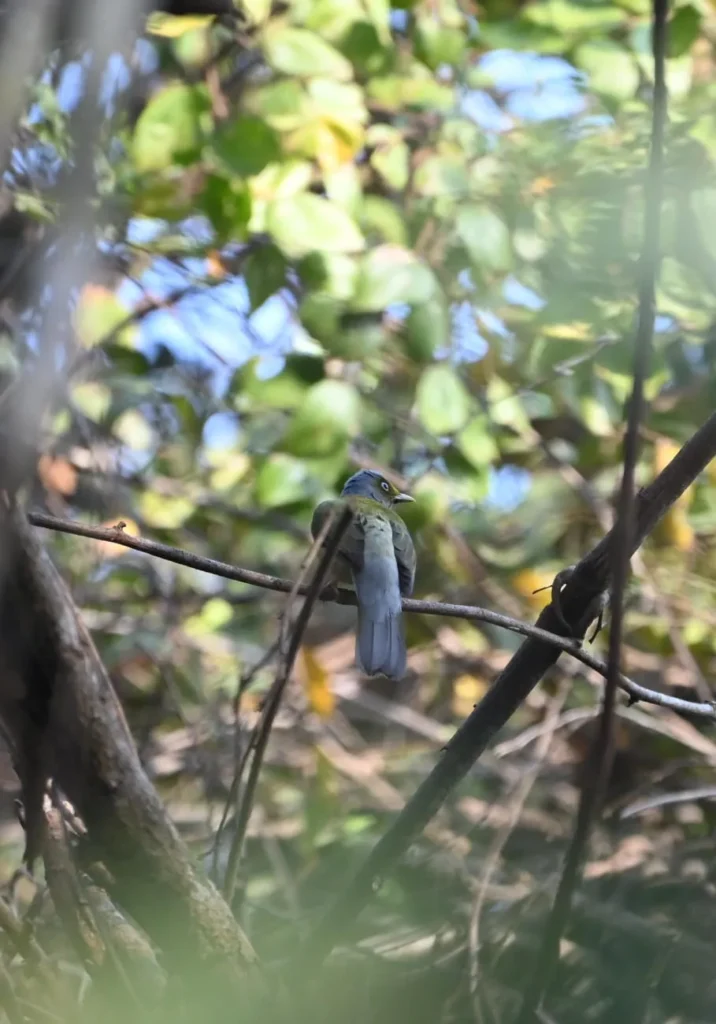
The bulbul was in the bag.
We were finally getting ready to leave the bulbuls when a bird flew into the top of a tall, dead palm.
‘Look, little spiderhunter!’
A target I’d given up hoping for, having dipped on it from the Himalayas down to Cambodia and Malaysia, not to mention Goa. Brief but unmistakable, amazingly long-billed, upright and lemon-bellied, it perched a moment before shooting off, clicking noisily.
It had been quite the morning.
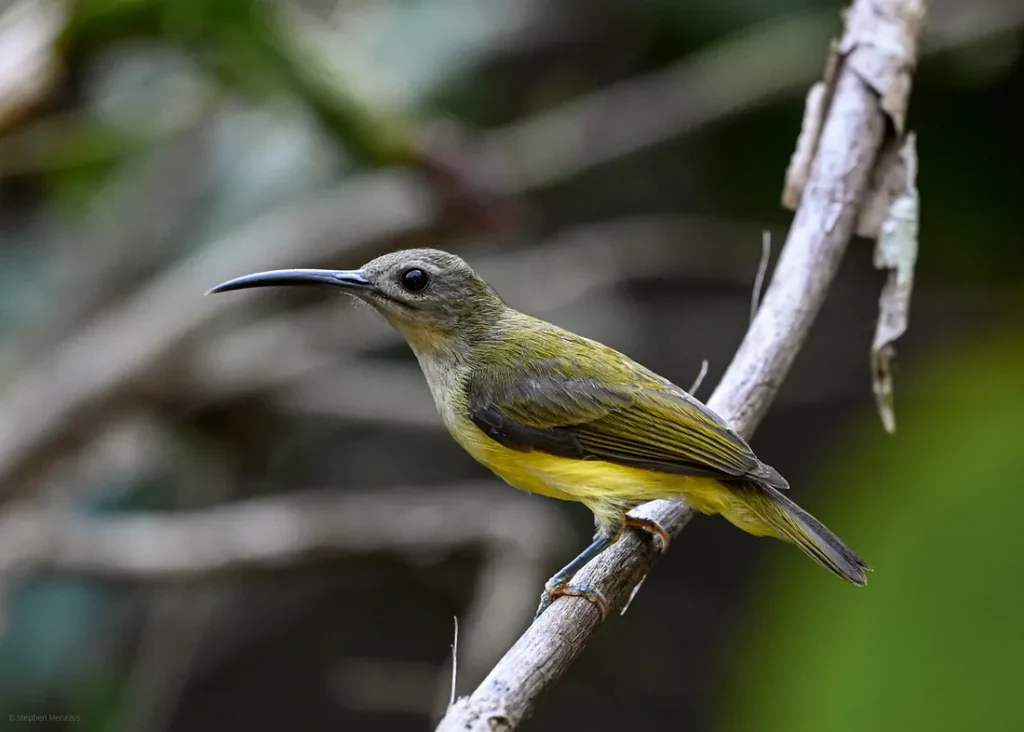
Socorro
We met up again a few days later at the foot of the Socorro plateau. The low sun gleamed off the blue tiles of a small chapel on the roadside.
We weren’t expecting too much in the afternoon heat. But at least there’d be nightjars.
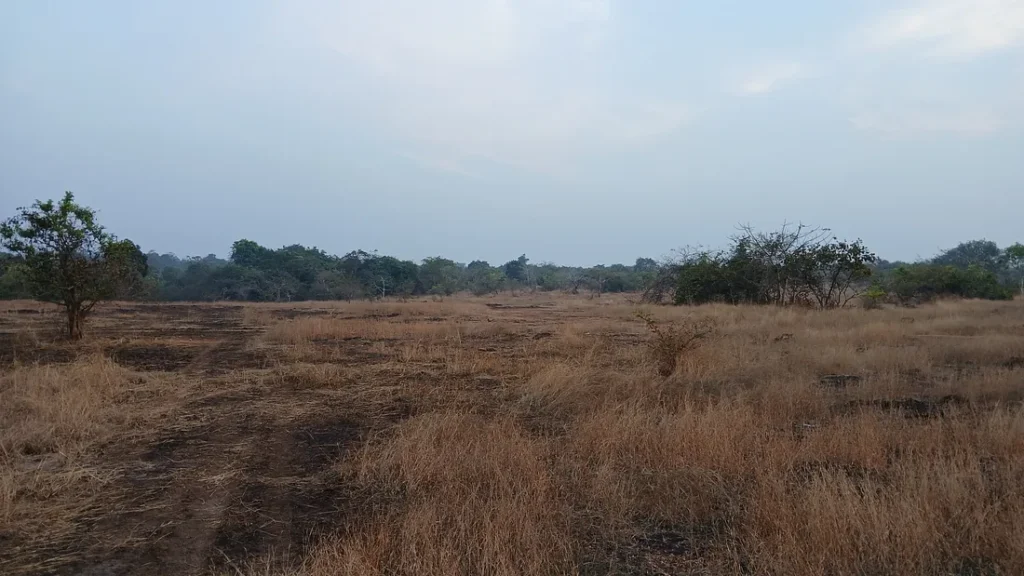
Little swifts circled in a vast sky along with a few brahminy and black kites. The red-earth trails on the plateau wound their way through the grassy plain and around small pockets of woodland. We scanned the open grassland and looked for movement in scrubby bushes.
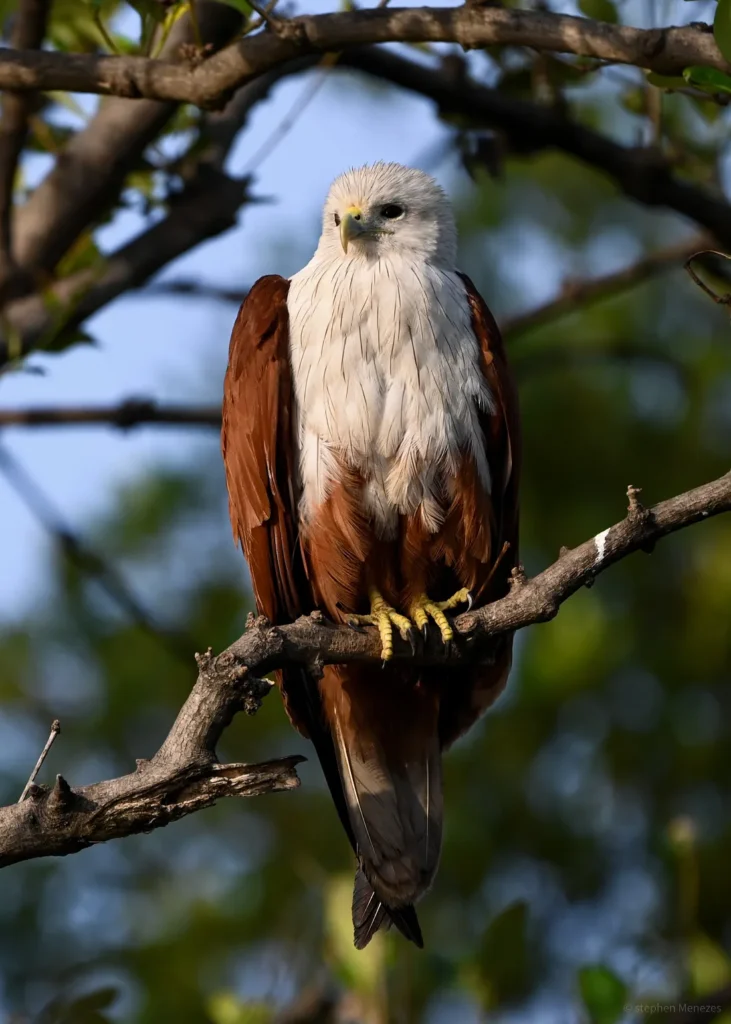
Creeping through deep cover like a squirrel, a blue-faced malkoha brought us a moment of excitement. Black drongos perched on wires and blue-tailed and green bee-eaters sallied out from the tops of shrubs taking insects. Plain prinias and Indian robins foraged around tussocks of grass on the path.
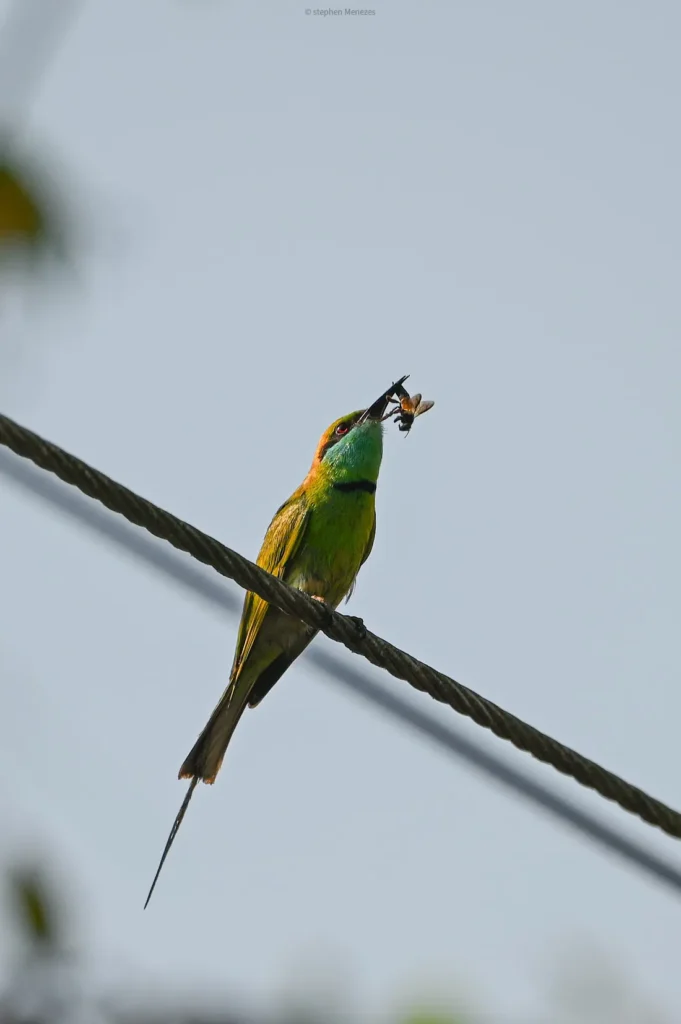
At a promising spot, we spent a long time looking deep into the thicket and seeing flashes of soft brown hopping between leaves far at the back of the bushes. I expected it to be another gaggle of jungle babbler but the lack of their telling calls gave us some hope.
Little by little, the birds grew more brave and left the densest scrub. I thought I saw a striking eye, a fanned, rufous tail between the thorny branches. And then, they were there. Bulging, orange eyes, yellow legs, a wedge-like bill and an attractive, uniformly ochre back.
It’s one of the most unique looking birds I’ve seen, the yellow-eyed babbler. Another massive tick.
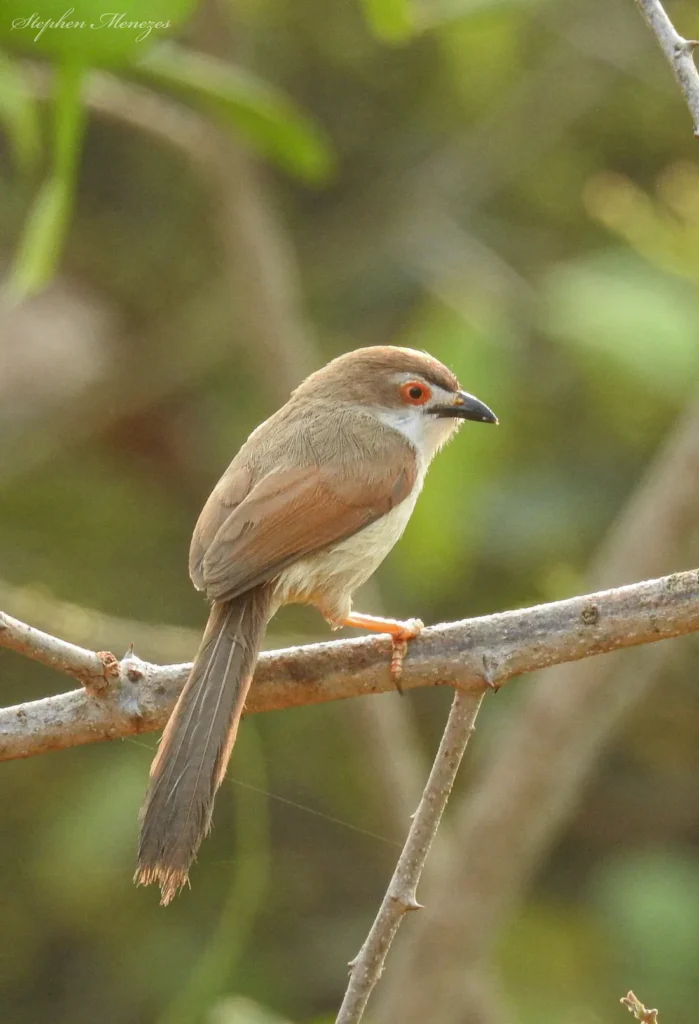
The surprises continued for the rest of the walk despite the sun beating down on us. Not long after the group of yellow-eyed babbler, we had three pallid harriers, a male and two ringtails, drifting overhead.
A little while later, on a track that led down through trees towards the thick forest surrounding the plateau, a white-eyed buzzard, another lifer, flew out from the jungle to perch prominently against the backdrop of lush green.
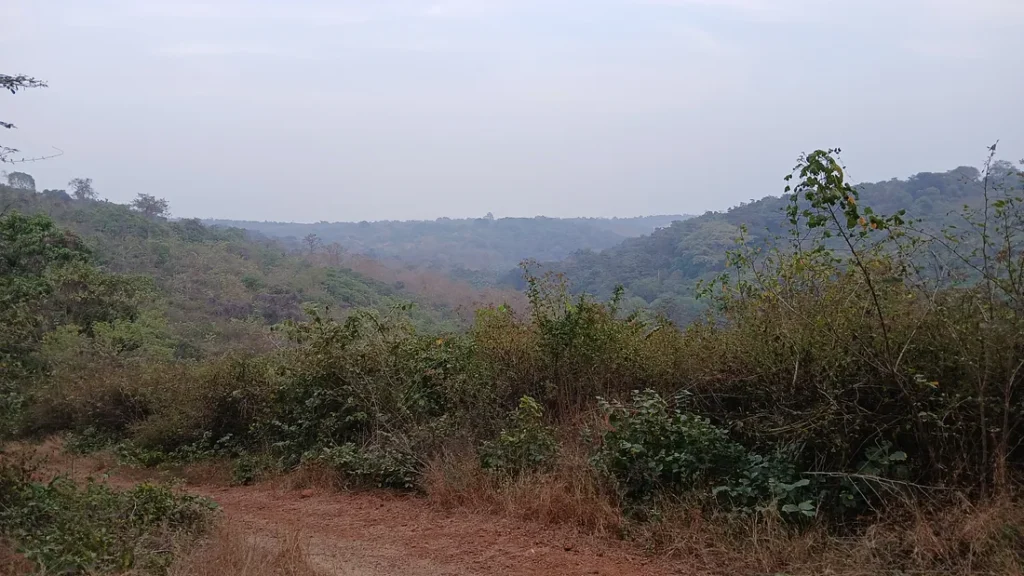
Back on the hilltop plain, Stephen picked out an Indian spotted eagle high in a dead tree, bringing the total lives to a pleasantly surprising four for the day.
And we still had the Jerdon’s nightjar to come.
Not bad for an afternoon stroll.
